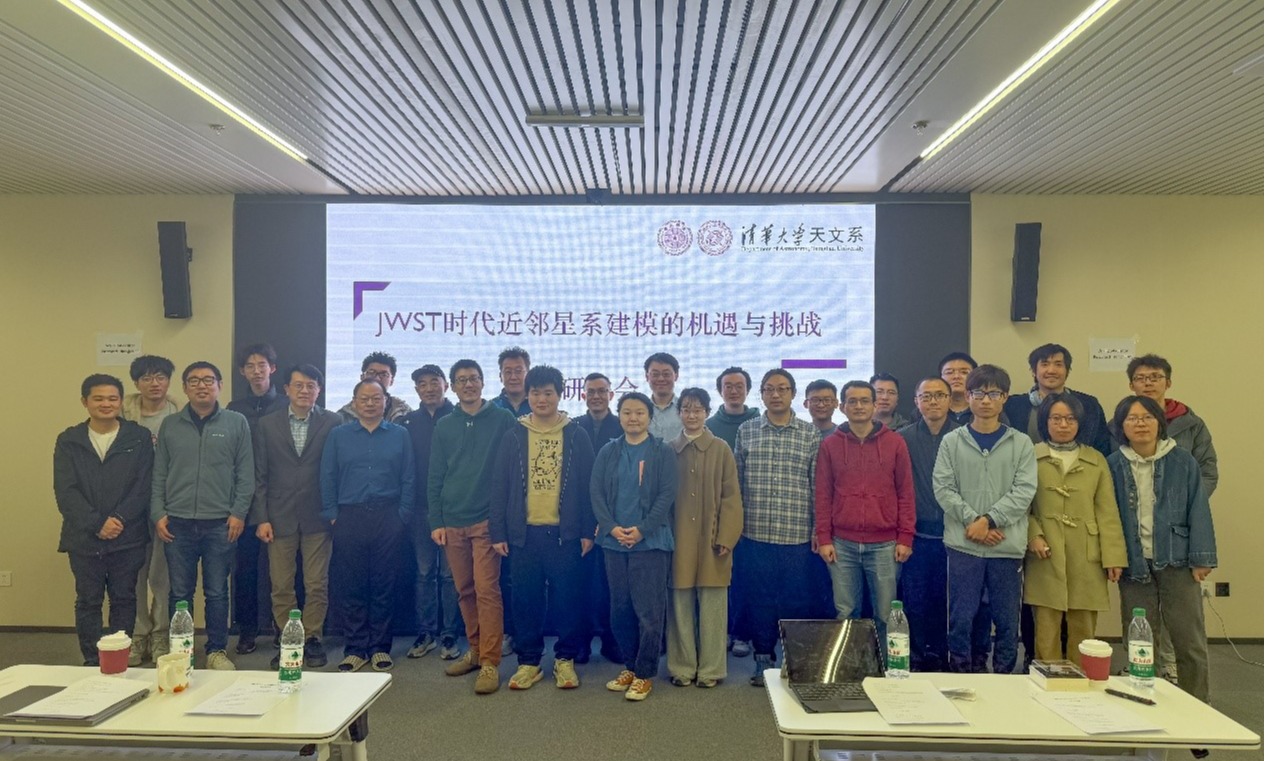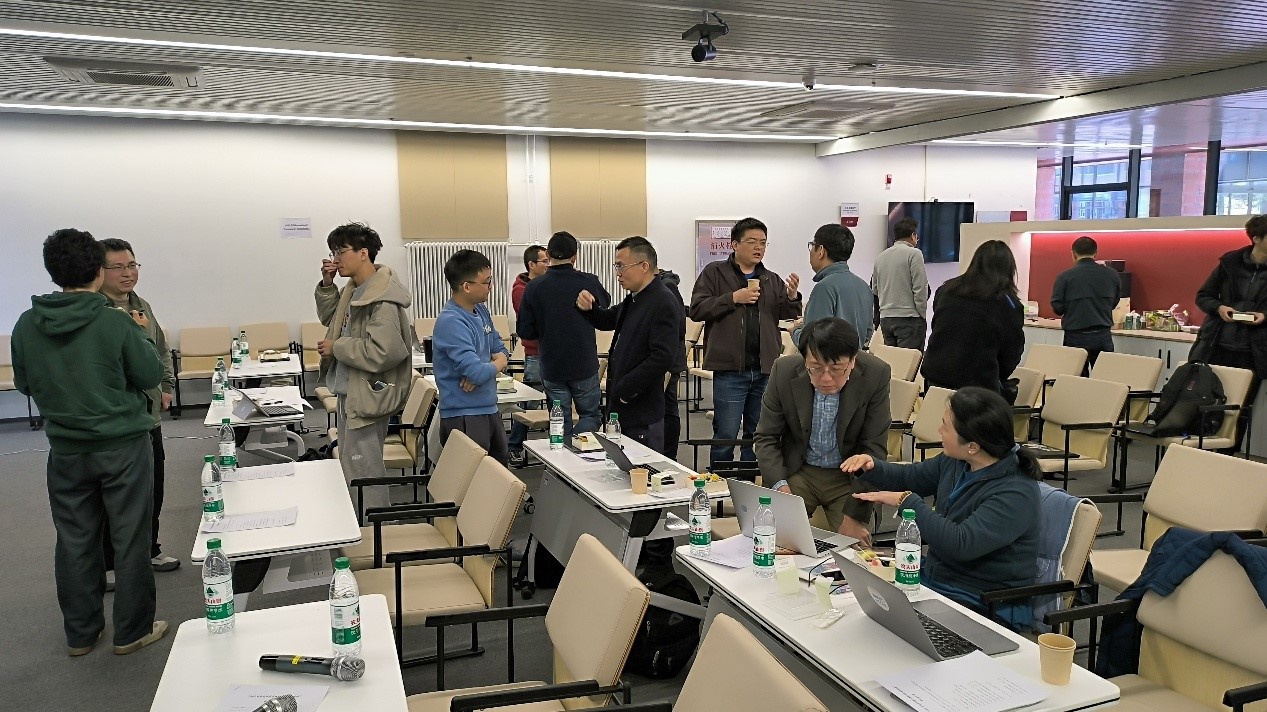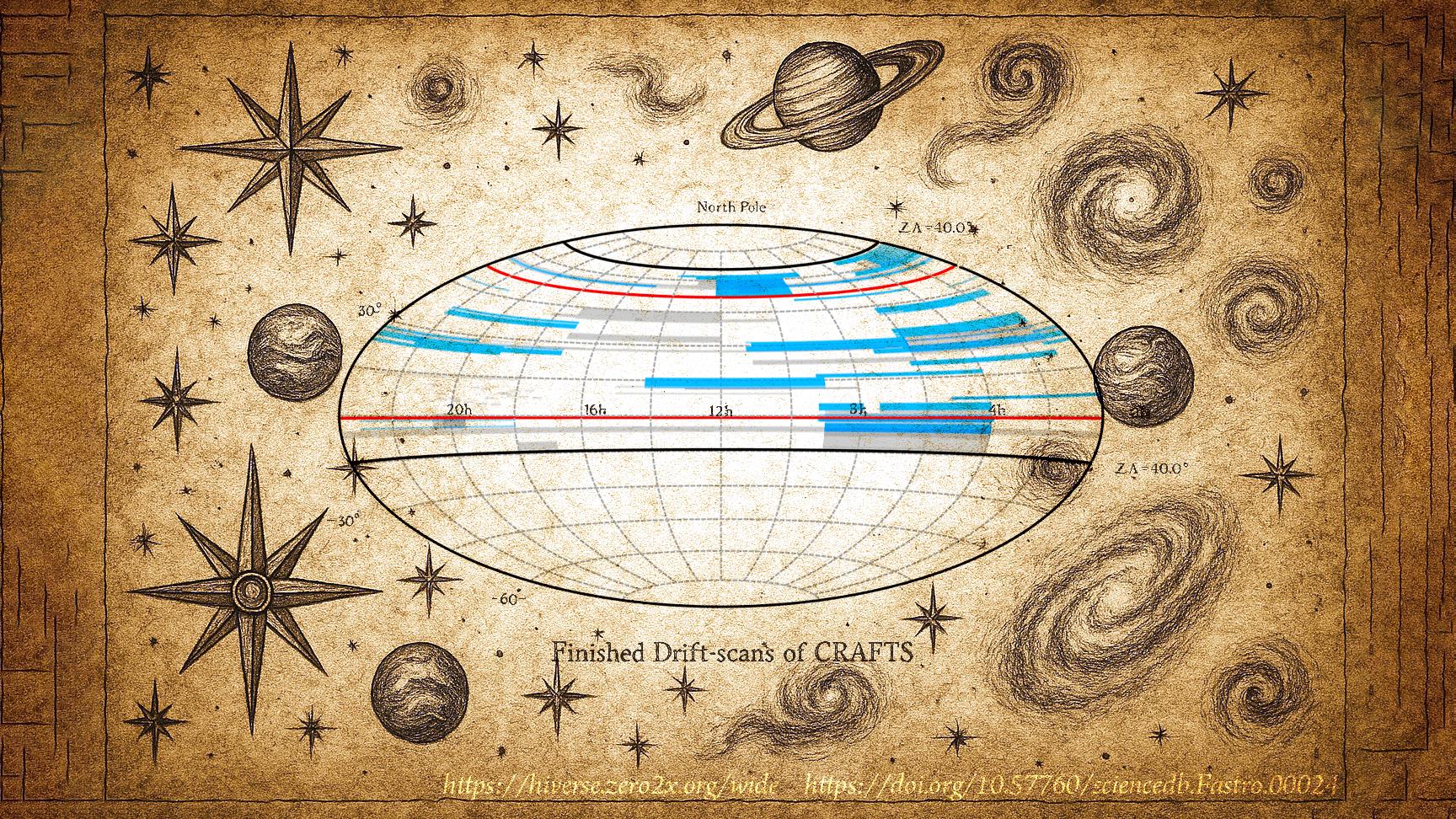On April 1–2, 2025, the Department of Astronomy at Tsinghua University hosted a workshop titled "Opportunities and Challenges in Modeling Nearby Galaxies in the JWST Era." More than 30 researchers from universities and research institutes across China gathered to engage in in-depth discussions on frontier topics of nearby galaxies.

Group photo of the workshop
The workshop featured 16 presentations and three focused discussion sessions. Topics included high-resolution, multi-wavelength observational characteristics of nearby galaxies, novel techniques in dynamical modeling, and recent advances in high-resolution hydrodynamical simulations. Participants explored the use of data from HST, ALMA, JWST, and other facilities in probing the internal structures of galaxies, multiphase gas properties, and the spatial distribution of star-forming regions. Discussions emphasized how to best leverage currently available spatially-resolved datasets to place meaningful constraints on galaxy dynamics and numerical simulations, fostering deeper collaboration between observations and theoretical/numerical studies.

Active discussion during one of the tea break sessions
A major highlight of the workshop was the data release of the Commensal Radio Astronomy FAST Survey (CRAFTS) data cubes. Dr. Zheng Zheng from the National Astronomical Observatory of China provided a systematic overview of the scientific importance of neutral hydrogen observations in nearby galaxy research. He shared progress on the CRAFTS survey conducted with the FAST telescope, unveiled the first batch of wide-band data products, and gave a detailed demonstration on data sharing, processing, and case studies. The data release event is followed by a broader discussion on the role of major current and future astronomical facilities in advancing nearby galaxy studies in China.

An artistically-designed postcard for the CRAFTS data release event

